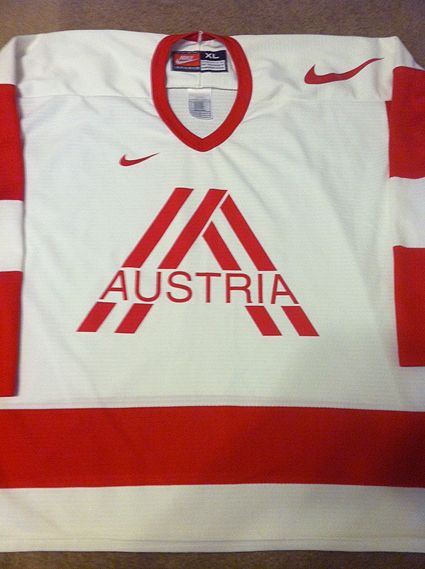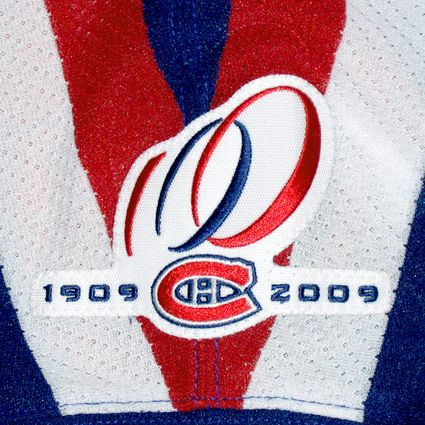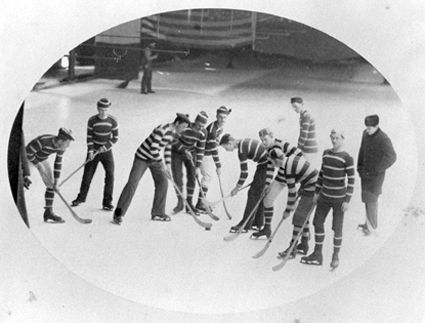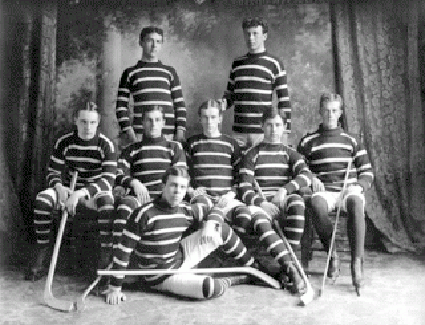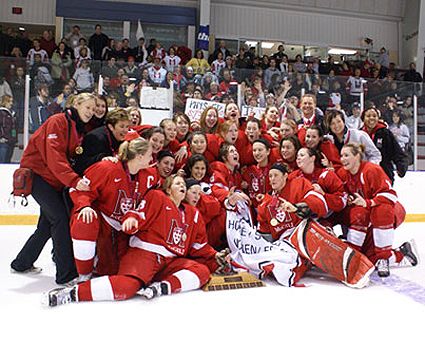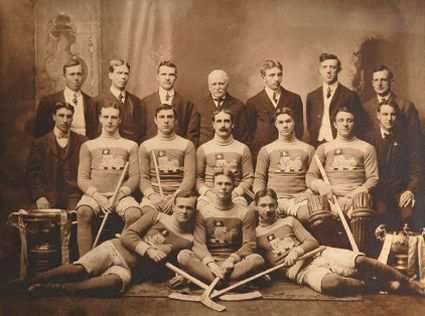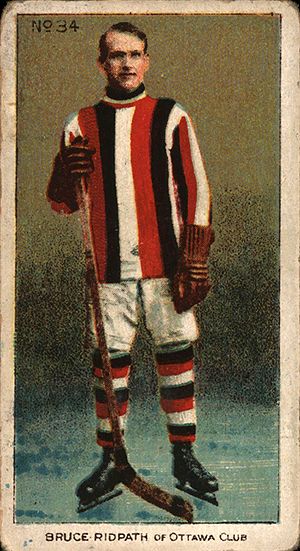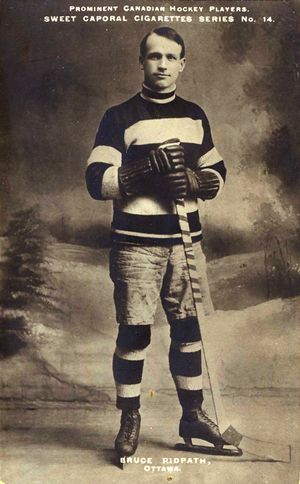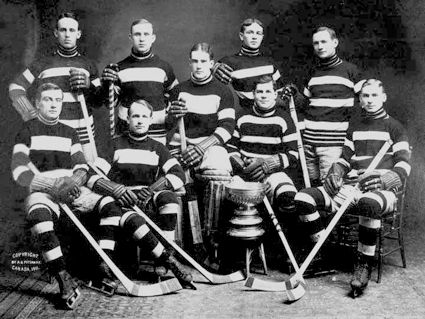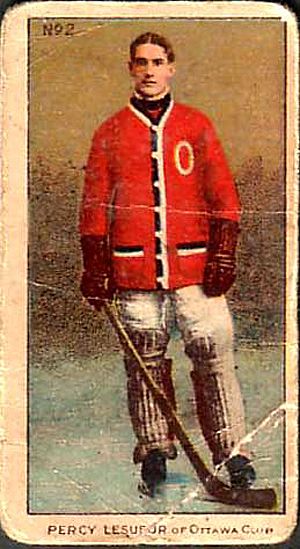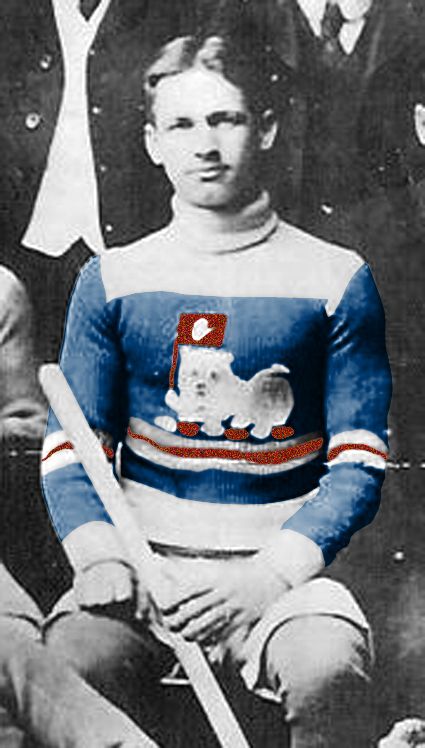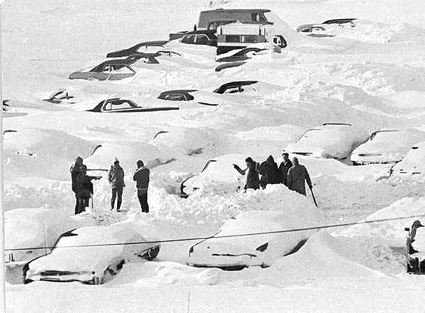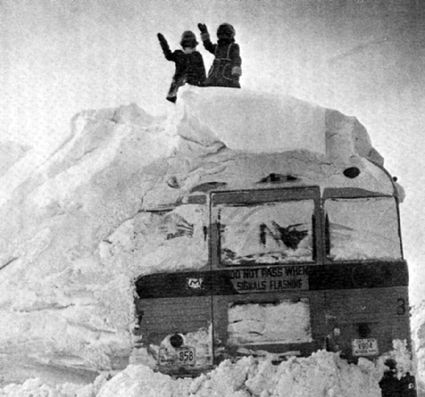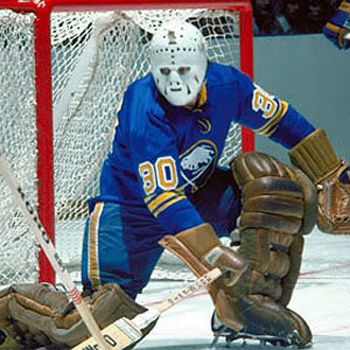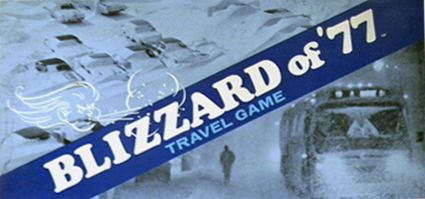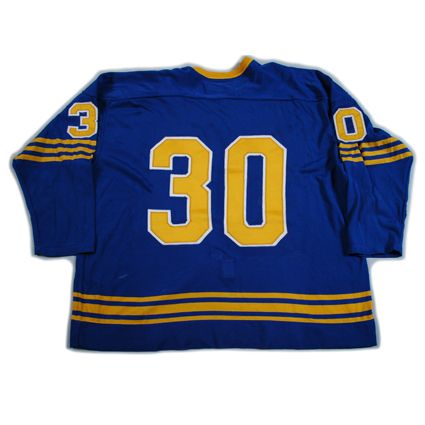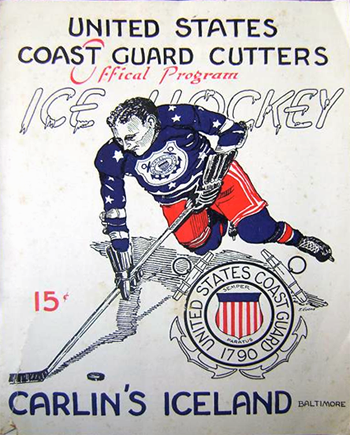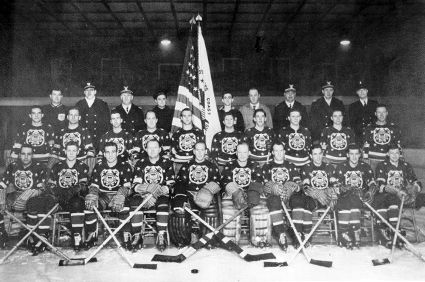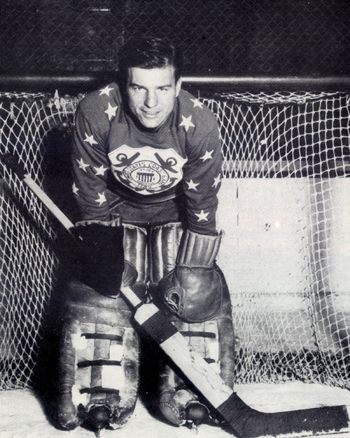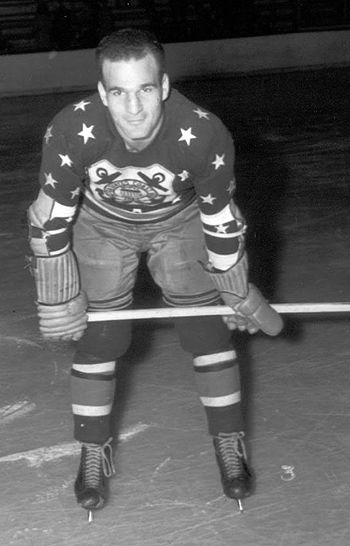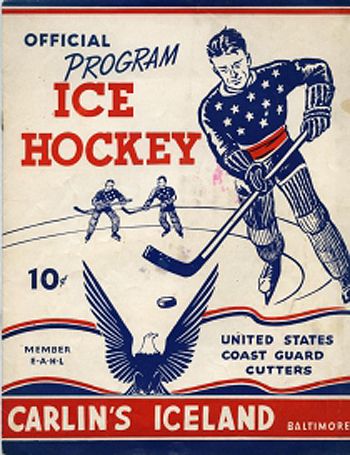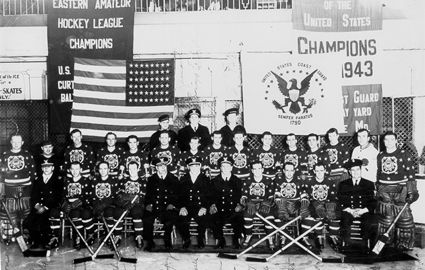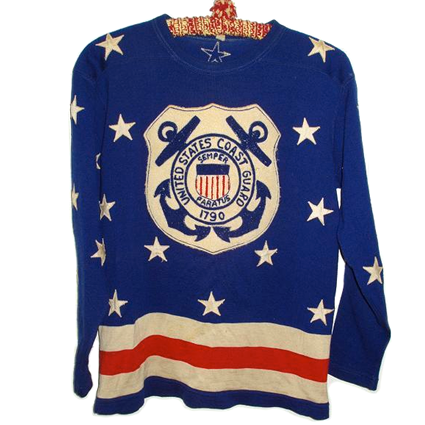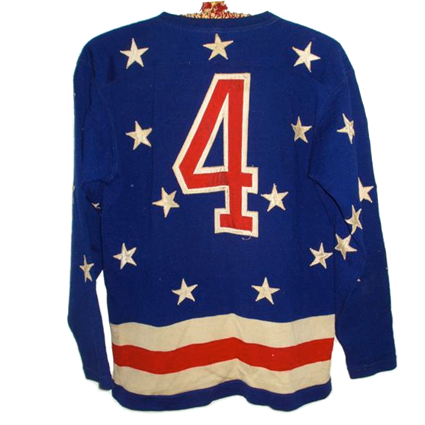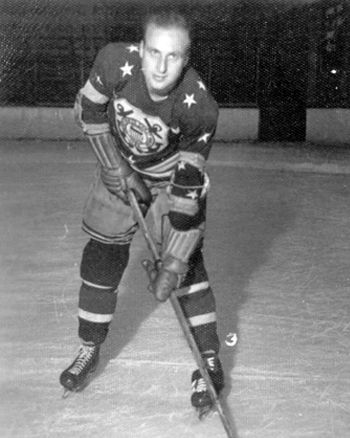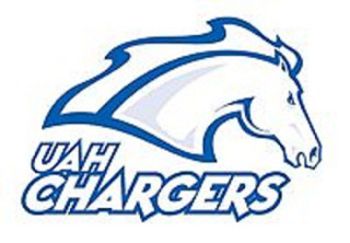Saturday, February 2, 2013
Ebay Jersey of the Week - 1996 Austria Nike Jersey
From time to time we find a jersey that really catches our attention because we know just how long it took us to get one like it for our collection and can't believe that someone hasn't jumped on the "Buy it Now" option or bid it up to a higher price yet.
This week's Third String Goalie Ebay Jersey of the Week is a 1996 Nike Austria National Team jersey. This style was worn during the 1996 IIHF World Ice Hockey Championships in a tournament hosted by the Austrians in Vienna.
This particular one looks to be in really good shape, especially for a jersey now 17 years old, and is blank on the back so you still have the option of adding a name and number on the back. It's also a listed as a size XL, which is a big plus, as auctions for older ones are seem to always be for a size small or medium, and also because older ones run smaller than current ones.
This particular style jersey does have a screened on crest, which is the way Nike made them back then. It's priced at $50 in a Buy it Now format, which is a good price for something this old.
Here is a link to the road version of this jersey in action at the 1996 World Championships, as worn by team captain Manfred Mühr as he wildly celebrates a goal for Austria. While you are watching as the video continues, be sure to take note of one Teemu Selanne wearing #88!
Since we like to add C's or A's to our jerseys, Mühr seems to be a great choice for customizing this jersey, as he wore the "C" and was a player of note for Austria, having played in the World Championships six times and the Olympics twice - 1988 and 1994.
Another options for customizing this jersey would be goaltender Reinhard Divis, who played 28 games for the St. Louis Blues between 2001 and 2006, Herbert Hohenberger or Dieter Kalt, both long-time veterans of the Austrian National Team.
In summary, if we didn't have a 1997 Austria jersey in our collection already, we'd be thrilled to acquire this rare 1996 one. We like the fact it's blank and an XL and know it's not and easily found style in this size, let alone this condition. Additionally, this seller has 383 positive feedbacks in the last year for a 100% rating and we have bought from this seller before and feel very comfortable pointing you in his direction.
This week's Third String Goalie Ebay Jersey of the Week is a 1996 Nike Austria National Team jersey. This style was worn during the 1996 IIHF World Ice Hockey Championships in a tournament hosted by the Austrians in Vienna.
This particular one looks to be in really good shape, especially for a jersey now 17 years old, and is blank on the back so you still have the option of adding a name and number on the back. It's also a listed as a size XL, which is a big plus, as auctions for older ones are seem to always be for a size small or medium, and also because older ones run smaller than current ones.
This particular style jersey does have a screened on crest, which is the way Nike made them back then. It's priced at $50 in a Buy it Now format, which is a good price for something this old.
Here is a link to the road version of this jersey in action at the 1996 World Championships, as worn by team captain Manfred Mühr as he wildly celebrates a goal for Austria. While you are watching as the video continues, be sure to take note of one Teemu Selanne wearing #88!
Since we like to add C's or A's to our jerseys, Mühr seems to be a great choice for customizing this jersey, as he wore the "C" and was a player of note for Austria, having played in the World Championships six times and the Olympics twice - 1988 and 1994.
Another options for customizing this jersey would be goaltender Reinhard Divis, who played 28 games for the St. Louis Blues between 2001 and 2006, Herbert Hohenberger or Dieter Kalt, both long-time veterans of the Austrian National Team.
In summary, if we didn't have a 1997 Austria jersey in our collection already, we'd be thrilled to acquire this rare 1996 one. We like the fact it's blank and an XL and know it's not and easily found style in this size, let alone this condition. Additionally, this seller has 383 positive feedbacks in the last year for a 100% rating and we have bought from this seller before and feel very comfortable pointing you in his direction.
Labels:
Austria
Friday, February 1, 2013
Third String Goalie on The Hockey Show
Thursday night Third String Goalie was a guest on The Hockey Show, hosted by Teebz and Beans. Teebz is the author of the highly recommended Hockey Blog in Canada.
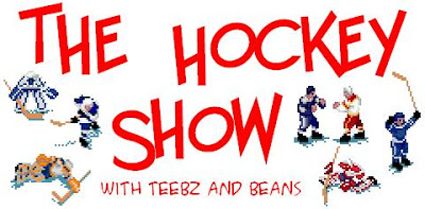

We answered all manner of questions on a variety of topics, including our memories of going to both Minnesota Fighting Saints as well as Minnesota North Stars games and their subsequent move to Dallas and the eventual arrival of the Minnesota Wild.
There was some Minnesota Golden Gopher talk as well as the expected hockey jersey discussion as well, during which we talk about how we were able to acquire our first game worn Soviet jerseys before we get riled up over the Mighty Ducks Wild Wing jersey.
To listening to the show, just click on the embedded player below.
Labels:
The Hockey Show
2008-09 Montreal Canadiens 1912-13 Centennial Saku Koivu Jersey
Today marks the anniversary of the debut of one of the most controversial jerseys in recent NHL history.
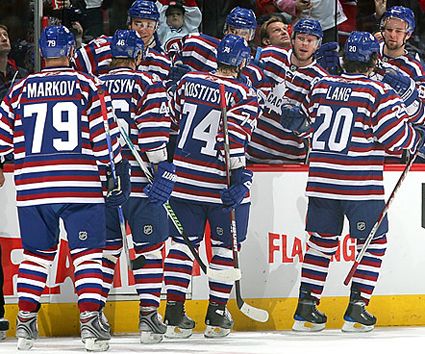
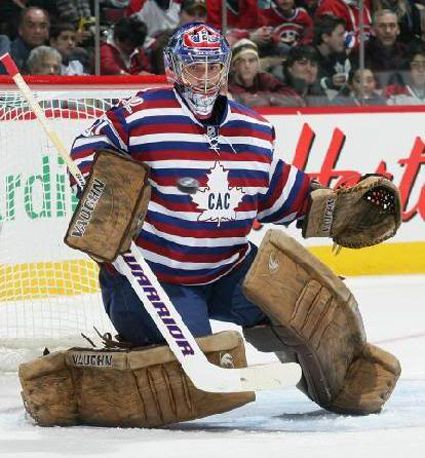
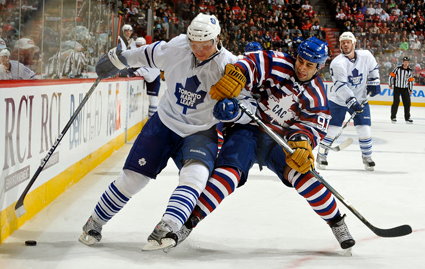
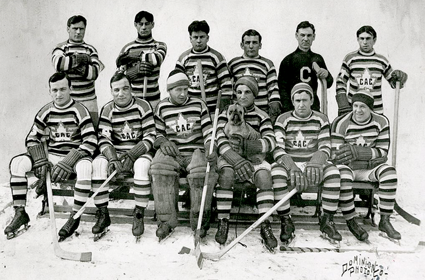
Here, with less than four minutes remaining in the game, the Canadiens fans begin to sing goodbye to the Maple Leafs while up 4-2 just a bit too soon during the 1912-13 Centennial jersey game on October 31, 2009…
As part of their centennial celebrations, the Montreal Canadiens brought back six vintage jerseys from their illustrious past, scheduled to we worn at various times throughout the 2008-09 and 2009-10 seasons.
They began, somewhat slowly, with their "1970-71" jerseys, which were actually no different than their current home jerseys. They even wore their "100 Seasons" patch on them, rather than the "Centennial" patch used on all the other jerseys in the centennial jersey program.
Things improved on November 15, 2008 when they brought back their gorgeous 1945-46 jerseys, which had also been used as their third jerseys as recently as 2006-07, this time properly adorned with their Centennial patch as part of the throwback program.
The next ones to hit the ice were their 1915-16 jerseys, as worn when the Canadiens captured their first Stanley Cup. These jerseys featured a much darker shade of red than their current red jerseys and the "CA" logo on both the chest and sleeve with the familiar blue stripe across the chest first seen in the 1912-13 season.
What really got people talking was the debut of today's featured jersey, the 2008-09 Montreal Canadiens 1912-13 Centennial Saku Koivu jersey.
The "Barberpole" jerseys were worn in a 3-1 loss to the Canadiens rivals the Boston Bruins, and were ridiculed by Bruins TV announcer Jack Edwards as "prison uniforms" during the contest, perhaps due to being paired with equally busy striped socks. Aside from losing the game, the Canadiens also lost Guillaume Latendresse to a shoulder injury and Robert Lang for the season due to a cut Achilles tendon, casting more dispersions on the multi-striped sweaters as being not only difficult to look at, but bad luck as well.
The Bruins Shawn Thornton was quoted as saying about the jerseys "I was really concerned about it in warmup. When there were 23 guys skating around, I was dizzy and I didn't know if I got enough sleep or what. It wasn't as bad once there were five guys out there."

Full credit goes to Canadiens netminder Carey Price, who wore a set of throwback pads and gloves for the occasion.

The jerseys featured a white maple leaf with the letters "CAC" in the center, which stands for "Club Athlétique Canadien", and were due to be worn again later that season on March 31, 2009, but Canadiens then head coach Bob Gainey passed on the jerseys for their second and final scheduled wearing, calling them "a distraction", and opting for the more traditional looking 1915-16 jerseys instead.
For reasons unknown, perhaps pressure from the marketing department or the retailers who invested in inventories of the barberpole jerseys, the sweaters made an unexpected return, appropriately some would say, on Halloween Night during the 2009-10 season in a game versus the Toronto Maple Leafs, making for the unusual sight of every player on the ice being decked out with a maple leaf on their chest!

The original jerseys were not worn in the National Hockey League (NHL) but in the NHL's predecessor the National Hockey Association (NHA). The Canadiens who would have worn the barberpole jersey in 1912-13 included future Hall of Famers Georges Vezina, Jack Laviolette and Didier Pitre.

Sadly, it was then announced that the Canadiens decided to end the wearing of the throwback jerseys as of the date of their actual centennial anniversary back on December 4, 2009, curiously a game in which they did not wear a throwback jersey!
This affected the scheduled wearing of their beautiful red and green 1910-11 jerseys on January 23, 2010 against the New York Rangers and the the blue 1909-10 jerseys from their inaugural season, which were to have been worn on February 13, 2010 against the Philadelphia Flyers, meaning both of those jerseys ended up being the only ones of the six in the program to be worn just once.
This affected the scheduled wearing of their beautiful red and green 1910-11 jerseys on January 23, 2010 against the New York Rangers and the the blue 1909-10 jerseys from their inaugural season, which were to have been worn on February 13, 2010 against the Philadelphia Flyers, meaning both of those jerseys ended up being the only ones of the six in the program to be worn just once.
Here, with less than four minutes remaining in the game, the Canadiens fans begin to sing goodbye to the Maple Leafs while up 4-2 just a bit too soon during the 1912-13 Centennial jersey game on October 31, 2009…
No mention of the Montreal Canadiens would be complete at Third String Goalie without a visit from our personal favorite Marie-Pier, who gives the Canadiens a run for their money in the stripe department as she reviews the Canadiens game versus the Maple Leafs from October 31, 2009.
The Habs shootout victory seems to have left her even more perky than usual and we actually were able to understand "Travis Moen" this time.
Labels:
Koivu Saku,
Montreal Canadiens
Thursday, January 31, 2013
1950's McGill University Redmen Jersey
In March of 1876, the first organized indoor hockey game took place at Montreal's Victoria Skating Rink by James Creighton and several students from McGill University. Several of those students, Richard F. Smith, W. F. Robertson and W. L. Murray, helped refine seven rules of the game as well as introducing the puck, which was carved from a rubber lacrosse ball.
A little less than two year later, on this date in 1877, the world's first organized hockey club, the McGill University Hockey Club, played their first game at the same Victoria Rink against a team called the "Victorias" which was comprised of members of Montreal's Victoria Skating Rink with the addition of players from both the Montreal Lacrosse Club and the Montreal Football Club. The game ended with a 2-1 victory for McGill.
Members of the first organized McGill club included Archibald D. Taylor (president), Henry "Harry" Abbott (captain), Robert J.B. Howard, Frederick W. Torrance, Lorne Campbell (goaltender) William W. Redpath, George R. Caverhill and Rankine Dawson. Those pioneers are now the first in a long line of lineage of the oldest ice hockey club in the world, which is still playing today.
By 1929 the club had adopted the nickname the Red Men, in deference to the red uniforms the team wore. Over time, the name evolved to Redmen.
McGill's first Queen's Cup championship (the second oldest hockey trophy still being awarded after the Stanley Cup) arrived in 1993, followed by titles in 1903 and 1905 with more championships arriving in 1912, 1918 and 1921
A period of dominance saw them take the title in 1930 and 1931 before seven consecutive championships spanning 1933 to 1939 before the final one of the era arrived in 1946.
McGill would have to wait until 2006 for their next title, a span of sixty years since their last championship. They would not have to wait long, as their next title arrived in 2008, which sent them on a new run of domination, as they have now reeled off five consecutive titles in 2008, 2009, 2010, 2011 and most recently in 2012, when they not only won the Queen's Cup as Ontario University Athletics championship, but also went on to win their first Canadian Interuniversity Sport University Cup championship, which dates back to 1963.
Additionally, the university's women's team, known as the Martlets, has now won seven titles of their own, with the first coming in 1985. After winning again in 2003, the gave McGill both the men's and women's titles in 2006. After a second consecutive championship in 2007, they again duplicated the men's team's titles in 2008, 2009 and 2010.
Of note, Kin St-Pierre become the first woman in CIS history to win a men's regular season game when she was in goal on November 15, 2003 in a 5+2 win over Ryerson University.
Today's featured jersey is a 1950's McGill University Redmen jersey. This classic sweater, made of wool, features a tie-neck collar and an embroidered felt McGill coat of arms crest. It's a beautiful example of a vintage sweater from the days when identifying your teammates on the ice was the main function of a sweater, rather than providing the club with income from merchandise sales.
Members of the first organized McGill club included Archibald D. Taylor (president), Henry "Harry" Abbott (captain), Robert J.B. Howard, Frederick W. Torrance, Lorne Campbell (goaltender) William W. Redpath, George R. Caverhill and Rankine Dawson. Those pioneers are now the first in a long line of lineage of the oldest ice hockey club in the world, which is still playing today.
Hockey's first known team photo with hockey jerseys, the 1881 McGill University Hockey Club
By 1929 the club had adopted the nickname the Red Men, in deference to the red uniforms the team wore. Over time, the name evolved to Redmen.
McGill's first Queen's Cup championship (the second oldest hockey trophy still being awarded after the Stanley Cup) arrived in 1993, followed by titles in 1903 and 1905 with more championships arriving in 1912, 1918 and 1921
The 1910 McGill University Hockey Club
A period of dominance saw them take the title in 1930 and 1931 before seven consecutive championships spanning 1933 to 1939 before the final one of the era arrived in 1946.
McGill would have to wait until 2006 for their next title, a span of sixty years since their last championship. They would not have to wait long, as their next title arrived in 2008, which sent them on a new run of domination, as they have now reeled off five consecutive titles in 2008, 2009, 2010, 2011 and most recently in 2012, when they not only won the Queen's Cup as Ontario University Athletics championship, but also went on to win their first Canadian Interuniversity Sport University Cup championship, which dates back to 1963.
2012 McGill University Hockey Club
Additionally, the university's women's team, known as the Martlets, has now won seven titles of their own, with the first coming in 1985. After winning again in 2003, the gave McGill both the men's and women's titles in 2006. After a second consecutive championship in 2007, they again duplicated the men's team's titles in 2008, 2009 and 2010.
The 2008 McGill University women's championship team
Of note, Kin St-Pierre become the first woman in CIS history to win a men's regular season game when she was in goal on November 15, 2003 in a 5+2 win over Ryerson University.
Kim St-Pierre
Today's featured jersey is a 1950's McGill University Redmen jersey. This classic sweater, made of wool, features a tie-neck collar and an embroidered felt McGill coat of arms crest. It's a beautiful example of a vintage sweater from the days when identifying your teammates on the ice was the main function of a sweater, rather than providing the club with income from merchandise sales.
photo courtesy of Classic Auctions
Today's video segment is a look at some of the hockey research being conducted at McGill University.
Labels:
McGill University
Wednesday, January 30, 2013
1908-09 Toronto Marlboros Bruce Ridpath Jersey
After playing junior hockey in 1904, Bruce Ridpath joined the Toronto Marlboros of the Ontario Hockey Association in 1905 as an amateur, turing professional with the Marlboros in 1906, playing in eight games and scoring 17 times.
He helped lead the Marlboros to the league championship in 1908, which led to the Marlboros facing the Montreal Wanderers in a one game challenge for the Stanley Cup. While Toronto would lose the game 6-4, Ridpath did score a goal during the contest.
On this date in 1909, Ridpath had his finest night on the ice, when he scored seven times in a 15-10 Toronto win over Brantford. Later that same season, Ridpath played with the Cobalt Silver Kings, who would be one of the founding members of the National Hockey Association the following season.
Ridpath did not return to Cobalt for the 1909-10 season, as he signed with the Ottawa Senators, who were also members in the new NHA along with the Haileybury Comets, Renfrew Creamery Kings, Montreal Shamrocks, Montreal Wanderers and a brand new club, the Montreal Canadiens.
The Senators were the holders of the Stanley Cup at the time Ridpath joined the club, and as such endured a pair of challenges for the cup while also playing their NHA regular season schedule. The first challenge was from Edmonton of the Alberta Amateur Hockey Association, who they turned back in Game 1 by a score of 8-4 with Ridpath contributing a goal. The second match two days later saw Ottawa rack up 13 goals to Edmonton's 7, with Ridpath netting three goals in the Senators successful defense.
The Senators lost control of the cup when they had to relinquish it to the league champion Wanderers, but Ridpath did finish second in the league in scoring with 15 goals in 12 games, second on the Senators to teammate Marty Walsh.
Ottawa rebounded in 1910-11 by taking the NHA championship, thanks to a 13-3 record and scoring a league best 122 goals, 31 more than the next closest team - quite a margin in a 16 game season! Ridpath came in third in scoring for the Senators and fourth in the league with 22 goals in those 16 games.
Once more in control of the Stanley Cup as league champions, Ottawa fended off two challenges for the cup, first a 7-4 owner Galt, with Ridpath scoring two, and a 13-4 drubbing of Port Arthur, during which Ridpath again contributing two to the cause.
Ridpath missed the entire 1911-12 season after suffering a fractured skull when hit by a car in downtown Toronto in November of 1911. He survived his life-threatening injuries and the Toronto Blueshirts wanted Ridpath to suit up for them, but his vision never sufficiently recovered enough for him to return to the ice. Benefit games were held in his honor to help him pay his medical bills in both Ottawa and Toronto due to his popularity.
While he played right wing, Ridpath designed a popular style of early shin pads for goalkeepers that were widely worn in the early days of professional hockey.
Today's featured jersey is a 1908-09 Toronto Marlboros Bruce Ridpath jersey. The Toronto Marlborough Athletic Club was founded in 1903 and operated several clubs - minor, junior and senior teams. The junior club won seven Memorial Cups and sent over 180 played to the NHL as an affiliate of the Toronto Maple Leafs, including six Hall of Famers. The senior team competed for the Stanley Cup in 1904 and won the Allan Cup in 1950 as the senior champions of Canada.
The 1905 OHA champion Toronto Marlboros
He helped lead the Marlboros to the league championship in 1908, which led to the Marlboros facing the Montreal Wanderers in a one game challenge for the Stanley Cup. While Toronto would lose the game 6-4, Ridpath did score a goal during the contest.
On this date in 1909, Ridpath had his finest night on the ice, when he scored seven times in a 15-10 Toronto win over Brantford. Later that same season, Ridpath played with the Cobalt Silver Kings, who would be one of the founding members of the National Hockey Association the following season.
Ridpath did not return to Cobalt for the 1909-10 season, as he signed with the Ottawa Senators, who were also members in the new NHA along with the Haileybury Comets, Renfrew Creamery Kings, Montreal Shamrocks, Montreal Wanderers and a brand new club, the Montreal Canadiens.
The Senators were the holders of the Stanley Cup at the time Ridpath joined the club, and as such endured a pair of challenges for the cup while also playing their NHA regular season schedule. The first challenge was from Edmonton of the Alberta Amateur Hockey Association, who they turned back in Game 1 by a score of 8-4 with Ridpath contributing a goal. The second match two days later saw Ottawa rack up 13 goals to Edmonton's 7, with Ridpath netting three goals in the Senators successful defense.
Ridpath in the unusual vertically striped Senators jersey of 1909-10
The Senators lost control of the cup when they had to relinquish it to the league champion Wanderers, but Ridpath did finish second in the league in scoring with 15 goals in 12 games, second on the Senators to teammate Marty Walsh.
Ottawa rebounded in 1910-11 by taking the NHA championship, thanks to a 13-3 record and scoring a league best 122 goals, 31 more than the next closest team - quite a margin in a 16 game season! Ridpath came in third in scoring for the Senators and fourth in the league with 22 goals in those 16 games.
Ottawa would return to their customary horizontal stripes in 1910-11
Once more in control of the Stanley Cup as league champions, Ottawa fended off two challenges for the cup, first a 7-4 owner Galt, with Ridpath scoring two, and a 13-4 drubbing of Port Arthur, during which Ridpath again contributing two to the cause.
Ridpath, front row second from the left, and the 1910-11 Ottawa Senators with the diminutive Stanley Cup
Ridpath missed the entire 1911-12 season after suffering a fractured skull when hit by a car in downtown Toronto in November of 1911. He survived his life-threatening injuries and the Toronto Blueshirts wanted Ridpath to suit up for them, but his vision never sufficiently recovered enough for him to return to the ice. Benefit games were held in his honor to help him pay his medical bills in both Ottawa and Toronto due to his popularity.
While he played right wing, Ridpath designed a popular style of early shin pads for goalkeepers that were widely worn in the early days of professional hockey.
Senators teammate Percey Lesueur wearing an early style of goalkeeper shin pads designed by Ridpath
Beyond his hockey career, Ridpath was also a member of the Toronto Canoe Club and was known as a canoe racer and stunt paddler, who performed shows around the globe!
Ridpath suffered a stroke in 1925 and died at the too young age of 40.
Today's featured jersey is a 1908-09 Toronto Marlboros Bruce Ridpath jersey. The Toronto Marlborough Athletic Club was founded in 1903 and operated several clubs - minor, junior and senior teams. The junior club won seven Memorial Cups and sent over 180 played to the NHL as an affiliate of the Toronto Maple Leafs, including six Hall of Famers. The senior team competed for the Stanley Cup in 1904 and won the Allan Cup in 1950 as the senior champions of Canada.
Labels:
Ridpath Bruce,
Toronto Marlboros
Tuesday, January 29, 2013
1976-77 Buffalo Sabres Gerry Desjardins Jersey
The snow started to fall early in the morning of Friday, January 28th and the winds began to blow at 29 miles and hour with gusts up to 49 mph as the Buffalo Sabres practiced before a scheduled flight to Montreal later that afternoon.
As the cold front reached Buffalo at 11:35 AM, the temperature fell 26 degrees, reaching zero within four hours and the winds now averaged 46 mph with gusts up to 69 mph, creating wind chills of -60º to -70º.


Once the game got underway, not surprisingly, the Canadiens broke out on top with a goal from Serge Savard at 17:23 to take a 1-0 lead into the first intermission. It would take Montreal just 35 seconds to extend their lead to 2-0 thanks to a goal by Steve Shutt.
Buffalo would dig in and convert a power play opportunity for their first goal, which came at 6:47 from Andre Savard from team captain Gilbert Perreault and Robert.
Montreal reasserted their expected dominance over the undermanned Sabres with Yvon Lambert's goal at 14:47. Still, Buffalo fought back and Luce kept the Sabres in touch with his 14th goal of the season at 15:55 from McAdam and Craig Ramsay. The period would finish that way, with Montreal leading 3-2 despite being outshot by Buffalo 20-14.
For the remainder of the contest, the Sabres and goaltender Gerry Desjardins would keep Montreal's high powered offense at bay. Eventually, defenseman Jim Schoenfeld would solve Michel Larocque at 8:25 to even the score at 3-3.
Schoenfeld's goal would hold up, as the Sabres rallied to limit the Canadiens to just five shots for the third period, to earn the plucky and shorthanded Sabres an unexpected, if not unbelievable, 3-3 tie on this date in 1977 against the defending (and eventual) Stanley Cup champions, outshooting them by a final margin of 27-19.
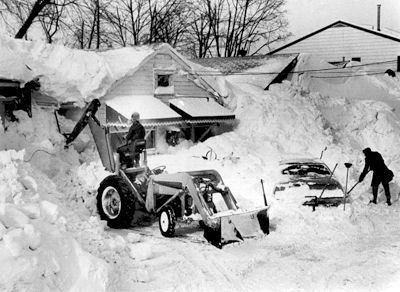
Thousands were stranded in offices, schools and factories as roads became impassable when as much as eight inches of snow fell or was blown off the frozen Lake Erie, on top of the 33 inches that had already choked Buffalo that winter. An estimated 13,000 people were stranded in downtown Buffalo alone, along with an estimated 8,000 cars clogging the roads of the city, many of which ended up completely buried. Some Sabres employees were forced to sleep overnight in the Sabres home rink "The Aud", among the 300 people who took shelter there.
Six homes were completely destroyed on one block as fire trucks were unable to get through the drifts to reach the fire. A state of emergency was declared in Erie County were Buffalo is located, as well as Niagara, Orleans and Genesee counties as drifts reached 15 feet high by nightfall as the high winds combined with the unusual weather conditions earlier that winter left Lake Erie covered with ice and a layer of snow that was easily picked up by the winds and deposited on shore in Buffalo. In a typical winter, the snow on the lake went through a thaw and freeze cycle that would leave it with a hard crust on top, preventing the wind from carrying the snow into the city in such massive amounts.

Driving home from practice, Sabres winger Jim Lorentz had to abandon his car and walk the last mile as the snow was now "bumper-high". He did not find his car until three days later.
Gary McAdam had five separate accidents in his new Thunderbird in his attempt to return home. At the scene of the fifth accident, while examining his battered car, another vehicle came sliding toward his, causing McAdam to jump onto the trunk of his car as the sliding vehicle came to a halt against his bumper.
It took Lee Fogolin and Brian Spencer an incredible four hours to make the five-minute drive to their condominium. They were not seen again for three days.
Sabres coach Floyd Smith postponed the team's planned departure from Friday to Saturday, but the blizzard conditions remained as the wind continued to howl, clocked at speeds up to 51 mph, blowing even more snow into Buffalo from Lake Erie.
Saturday, for the first time in 143 years the Buffalo Courier Express could not publish it's morning newspaper.
Coach Smith was able to make it to the airport by following snow plows, but it stretched his usual 20 minute drive to two hours. Defenseman Jerry Korab couldn't even open the door of his house, so he called winger Rene Robert and told him, "If you want me to protect you tonight, come dig me out." Robert arrived with his four-wheel-drive truck, dug Korab out and headed off for the airport with three additional teammates along for the ride.

By 3 PM, only 10 players had arrived. As Smith as about to phone Montreal to cancel the game, Jocelyn Guevremont, who had gotten to his four-wheel-drive vehicle by jumping out of a window and shoveling his way to his garage, arrived with four other players, giving Buffalo enough bodies to make the trip.
"On the plane, the stewardesses were hollering at the pilots that we couldn't take off," recalled Don Luce. "I think they tried to turn it around, but all the plane did was blow sideways. Somehow they got it in the air."
Sabres Hall of Fame announcer Ted Darling was unable to make the flight to Montreal and was forced to call the game over the phone from his apartment while watching the game on television.
Once the game got underway, not surprisingly, the Canadiens broke out on top with a goal from Serge Savard at 17:23 to take a 1-0 lead into the first intermission. It would take Montreal just 35 seconds to extend their lead to 2-0 thanks to a goal by Steve Shutt.
Buffalo would dig in and convert a power play opportunity for their first goal, which came at 6:47 from Andre Savard from team captain Gilbert Perreault and Robert.
Montreal reasserted their expected dominance over the undermanned Sabres with Yvon Lambert's goal at 14:47. Still, Buffalo fought back and Luce kept the Sabres in touch with his 14th goal of the season at 15:55 from McAdam and Craig Ramsay. The period would finish that way, with Montreal leading 3-2 despite being outshot by Buffalo 20-14.
For the remainder of the contest, the Sabres and goaltender Gerry Desjardins would keep Montreal's high powered offense at bay. Eventually, defenseman Jim Schoenfeld would solve Michel Larocque at 8:25 to even the score at 3-3.
Gerry Desjardins
Schoenfeld's goal would hold up, as the Sabres rallied to limit the Canadiens to just five shots for the third period, to earn the plucky and shorthanded Sabres an unexpected, if not unbelievable, 3-3 tie on this date in 1977 against the defending (and eventual) Stanley Cup champions, outshooting them by a final margin of 27-19.
The blizzard forced the Sabres to cancel the following night's game in Buffalo against the Los Angeles Kings, a day when the winds continued to howl with gusts up to 52 mph.
Monday, the Sabres boarded a bus for what turned out to be a 10-hour trip across New York State for a game against the Islanders to start a three game road trip as the storm raged in Buffalo until Tuesday. While only 12 inches of new snow fell, the wind created drifts that finally topped out at 30 feet. Some areas even banned snowmobiles, as one rider was injured in a collision with a chimney on top of a house and the high drifts caused low clearance issues with power lines! Some towns even resorted to using metal detectors to locate buried cars before plowing the roads.

The Sabres next scheduled home game against the Toronto Maple Leafs was also postponed while the city was still recovering from the paralyzing drifts, meaning the Sabres went two weeks without a home game. Additionally, the Buffalo Braves of the NBA postponed four of their scheduled home games.
In all, there were 29 storm related deaths in Western New York, 11 of those in the City of Buffalo. Nine of those unfortunate people were found buried in their cars.
Several books have been written about the Blizzard of '77, which are available here.
Several books have been written about the Blizzard of '77, which are available here.
There was even a Blizzard of '77 board game created in the aftermath, in which, once the blizzard hits, you flip the board over and now all the spaces become hazards of one sort or another, making any movement difficult at best!
Today's featured jersey is a 1976-77 Buffalo Sabres Buffalo Sabres Gerry Desjardins jersey, the style worn in Montreal the night 15 intrepid Buffalo Sabres managed to escape storm ravaged Buffalo to take on the defending Stanley Cup champion Montreal Canadiens and hold them to a 3-3 tie.
At the time the Sabres were only in their sixth season and this was still their original jersey style with the tie-neck collar, no logos on the shoulders and without names on the back, which were added the following season. The Sabres jerseys retained their lace up collars until 1978-79 when they were replaced by v-neck sweaters.
Desjardins began his NHL career with the Los Angeles Kings in 1968-69 and was later involved in a trade which sent him to the Chicago Black Hawks in 1969-70. Chicago actually traded him to the California Seals on September 9th, 1971, only to be sent back to Chicago in another trade five weeks later before ever playing a game for California!
Desjardins began his NHL career with the Los Angeles Kings in 1968-69 and was later involved in a trade which sent him to the Chicago Black Hawks in 1969-70. Chicago actually traded him to the California Seals on September 9th, 1971, only to be sent back to Chicago in another trade five weeks later before ever playing a game for California!
The New York Islanders claimed him in the 1972 expansion draft from Chicago. He suffered through two losing seasons as the Islanders found their feet in the NHL. Desjardins sought greener pastures in the WHA, but signed for the 1974-75 season with the unstable Michigan Stags franchise, which became the Baltimore Blades mid-season, a move which triggered an escape clause in his contract, allowing him to sign with the Buffalo Sabres in time to appear in nine regular season games as well as the teams playoff run all the way to the Stanley Cup Finals.
With Buffalo, he found not only stability, but success as well, easily setting career highs with 29 and then 31 wins as the Sabres number one goaltender before being forced to retire after being struck in the eye by a puck after playing just three games of the 1977-78 season.
Today's first video is an amazing look at the Blizzard of 1977 and it's effects on Buffalo.
Here is a pair of videos showing how a wall of snow coming off of Lake Erie can turn an ordinary day into a white out in a matter of minutes.
Labels:
Buffalo Sabres,
Desjardins Gerry
Monday, January 28, 2013
1943-44 United States Coast Guard Cutters Ken Lundberg Jersey
While it can be traced back to 1790 as a part of the United States Treasury, the Revenue Cutter Service was merged with the United States Life-Saving Service on this date in 1915, which formally established the United States Coast Guard.
Shortly after Japan attacked Pearl Harbor in December of 1941, the United States Coast Guard Cutters hockey team was formed by Personnel Officer C. R. MacLean, a former player and hockey fan. The team was based in Curtis Bay, Maryland and played out of the Carlin's Iceland rink in Baltimore.
MacLean encouraged enlisting hockey players to choose the Coast Guard, and the team was became comprised of both amateur and professional players, including a one-time captain of the NHL's New York Rangers.
The Cutters played in the Eastern Amateur Hockey League, considered one of the most competitive leagues of it's time, during the 1942-43 season. They dominated the league with a 32-13-1 record, winning the league regular season title by 15 points and led the league in goals with 223, 26 more than the New York Rovers.
Joe Kucler led the league in not only goals, with 40, but also assists with 41 to easily win the scoring title with 81 points in only 44 games played.
In their star-spangled sweaters, the Cutters were a unique draw, as wherever they played, they were accompanied by a 30-piece marching band, which created a buzz in the arena every time.
The most notable player on the Cutters was eventual Hockey Hall of Famer Frank Brimsek, who had recently backstopped the Boston Bruins to a Stanley Cup championships in 1939 and 1941.
Other notable members of the Cutters were Art Coulter, an 11 year NHL veteran and former captain of the New York Rangers, former Detroit Red Wings defenseman Alex Motter and the notoriously rugged John Mariucci from the Chicago Black Hawks.
The Cutters were so strong that they were able to win the National Senior Open Championship of the Amateur Hockey Association in their first season of 1942-43 behind the coaching of former NHL referee Mel Harwood.
Exhibition games were also a part of the Cutters schedule, particularly during their second season after they withdrew from the EHL in late November. Some of their most memorable game came against similar teams from the Canadian armed services, which included a 5-2 win over the Ottawa Commandos, which featured three ex-NHLers of their own.
Another memorable game took place on January 6, 1944 when the Cutters hosted the defending Stanley Cup champion Red Wings at Carlin's Iceland. The Cutters trailed just 4-3 in the third period before Detroit pulled away for an 8-3 win.
The Coast Guard club was quite popular in Boston and New York, where they regularly drew crowds of over 12,000 fans before questions about why they were still playing hockey while others were begin sent overseas to fight led to enough pressure to force the team to disband, but not before winning their second consecutive National Senior Open Championship in 1944.
Today's featured jersey is a 1943-44 United States Coast Guard Cutters Ken Lundberg jersey.
This highly attractive star-spangled jersey features a large, detailed chenille crest and numerous stars, all individually sewn on, making for one very striking sweater which had an all-too-short life span.
Today's video section is Semper Paratus, the Coast Guard marching song played by the band which accompanied the Cutters hockey team to their games. Think of it like the Hartford Whalers "Brass Bonanza", only decades ahead of its time!
Shortly after Japan attacked Pearl Harbor in December of 1941, the United States Coast Guard Cutters hockey team was formed by Personnel Officer C. R. MacLean, a former player and hockey fan. The team was based in Curtis Bay, Maryland and played out of the Carlin's Iceland rink in Baltimore.
MacLean encouraged enlisting hockey players to choose the Coast Guard, and the team was became comprised of both amateur and professional players, including a one-time captain of the NHL's New York Rangers.
The Cutters played in the Eastern Amateur Hockey League, considered one of the most competitive leagues of it's time, during the 1942-43 season. They dominated the league with a 32-13-1 record, winning the league regular season title by 15 points and led the league in goals with 223, 26 more than the New York Rovers.
Joe Kucler led the league in not only goals, with 40, but also assists with 41 to easily win the scoring title with 81 points in only 44 games played.
The 1942-43 Coast Guard Cutters
"Whenever we scored," said Mike Nardell, "they'd strike up Semper Paratus ("Always Ready"), the Coast Guard marching song. I loved that team so much I never wanted to take off my equipment. Years later, when I played pro for the Clinton (N.Y.) Comets, I'd always wear my Coast Guard jersey under my Comets uniform."
Frank Brimsek
Other notable members of the Cutters were Art Coulter, an 11 year NHL veteran and former captain of the New York Rangers, former Detroit Red Wings defenseman Alex Motter and the notoriously rugged John Mariucci from the Chicago Black Hawks.
John Mariucci
The Cutters were so strong that they were able to win the National Senior Open Championship of the Amateur Hockey Association in their first season of 1942-43 behind the coaching of former NHL referee Mel Harwood.
"Harwood was an excellent coach," said team member Manny Cotlow. "He certainly had the respect of the players. He was good to us and the players paid him back. Harwood got the most out of us."
Exhibition games were also a part of the Cutters schedule, particularly during their second season after they withdrew from the EHL in late November. Some of their most memorable game came against similar teams from the Canadian armed services, which included a 5-2 win over the Ottawa Commandos, which featured three ex-NHLers of their own.
Another memorable game took place on January 6, 1944 when the Cutters hosted the defending Stanley Cup champion Red Wings at Carlin's Iceland. The Cutters trailed just 4-3 in the third period before Detroit pulled away for an 8-3 win.
The Coast Guard club was quite popular in Boston and New York, where they regularly drew crowds of over 12,000 fans before questions about why they were still playing hockey while others were begin sent overseas to fight led to enough pressure to force the team to disband, but not before winning their second consecutive National Senior Open Championship in 1944.
The 1943-44 Coast Guard Cutters
Today's featured jersey is a 1943-44 United States Coast Guard Cutters Ken Lundberg jersey.
This highly attractive star-spangled jersey features a large, detailed chenille crest and numerous stars, all individually sewn on, making for one very striking sweater which had an all-too-short life span.
Ken Lundberg
Today's video section is Semper Paratus, the Coast Guard marching song played by the band which accompanied the Cutters hockey team to their games. Think of it like the Hartford Whalers "Brass Bonanza", only decades ahead of its time!
Sunday, January 27, 2013
NCAA College Hockey Update - The University of Alabama-Huntsvile Chargers
In a followup to our recent post about NCAA college hockey and the formation of the Big Ten Hockey Conference and subsequent major reshuffling of conferences, there has been a new development, that being the far-flung, independent program the University of Alabama-Huntsville Chargers, a program already back from the dead when it was announced it was being downgraded from Division I status in October of 2011 by the school's interim president, has not only survived that attempt to kill it off only to survive for the 2012-13 season, but will now live on indefinitely.
The Chargers, by far the southern-most school in NCAA Division I hockey, saw their previous conference College Hockey America fold at the end of the 2009-10 season after being a member of the tiny conference for 11 seasons, which never numbered more than six schools and saw two of them leave for other conferences and two more schools discontinue their programs.
During it's final season the CHA was down to just four schools. With Bemidji State leaving after finally gaining acceptance into the WCHA to join it's Minnesota neighbors, and Niagara and Robert Morris joining Atlantic Hockey conference, UAH was left standing without a conference when the music stopped.
The Chargers were denied entry into the CCHA, which looked to be a death blow for the program, which dates back as a varsity program to 1985. Still, they pressed on as an independent following the saving of the program by the new school president Dr. Robert Altenkrich in December of 2011.
This season has not been as easy one for the team, required by the difficulties of scheduling to play the majority of it's games on the road, including 12 consecutive from October 19th through November 24th and going 1-11 in those games. In addition, to fill out their schedule, they also have played games against non-Divison I programs such as the club teams from the Universities of Alabama, Vanderbilt and Oklahoma and Division III opponents Finlandia and Adrian, winning all seven of those non-Divsion I contests.
But the Chargers had one more victory to add to their difficult season, their program was spared an all but certain death when they were unanimously accepted as the tenth member of the revamped WCHA for the 2013-14 season, joining Alaska-Anchorage, Alaska-Fairbanks, Bemidji State, Bowling Green, Ferris State, Lake Superior State, Michigan Tech, Minnesota State-Mankato and Northern Michigan.
For more on this story, we recommend the excellent article at the UnitedStatesOfHockey.com.
The Chargers, by far the southern-most school in NCAA Division I hockey, saw their previous conference College Hockey America fold at the end of the 2009-10 season after being a member of the tiny conference for 11 seasons, which never numbered more than six schools and saw two of them leave for other conferences and two more schools discontinue their programs.
During it's final season the CHA was down to just four schools. With Bemidji State leaving after finally gaining acceptance into the WCHA to join it's Minnesota neighbors, and Niagara and Robert Morris joining Atlantic Hockey conference, UAH was left standing without a conference when the music stopped.
The 2010 CHA playoff champion Chargers
The Chargers were denied entry into the CCHA, which looked to be a death blow for the program, which dates back as a varsity program to 1985. Still, they pressed on as an independent following the saving of the program by the new school president Dr. Robert Altenkrich in December of 2011.
This season has not been as easy one for the team, required by the difficulties of scheduling to play the majority of it's games on the road, including 12 consecutive from October 19th through November 24th and going 1-11 in those games. In addition, to fill out their schedule, they also have played games against non-Divison I programs such as the club teams from the Universities of Alabama, Vanderbilt and Oklahoma and Division III opponents Finlandia and Adrian, winning all seven of those non-Divsion I contests.
But the Chargers had one more victory to add to their difficult season, their program was spared an all but certain death when they were unanimously accepted as the tenth member of the revamped WCHA for the 2013-14 season, joining Alaska-Anchorage, Alaska-Fairbanks, Bemidji State, Bowling Green, Ferris State, Lake Superior State, Michigan Tech, Minnesota State-Mankato and Northern Michigan.
There will be challenges for UAH to be competitive with the long established programs they will be competing against, as well as the always present issues with travel due to their out of the way location, but the other members of the WCHA, who themselves had to have felt shunned when the bigger schools all left them behind when they joined either the Big Ten Hockey Conference or the National Collegiate Hockey Conference, did the right thing and accepted the Chargers into the WCHA.
For more on this story, we recommend the excellent article at the UnitedStatesOfHockey.com.
Labels:
NCAA,
University of Alabama-Huntsville
Subscribe to:
Comments (Atom)

